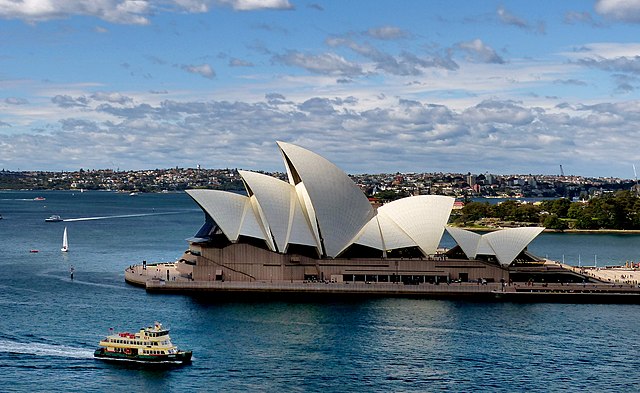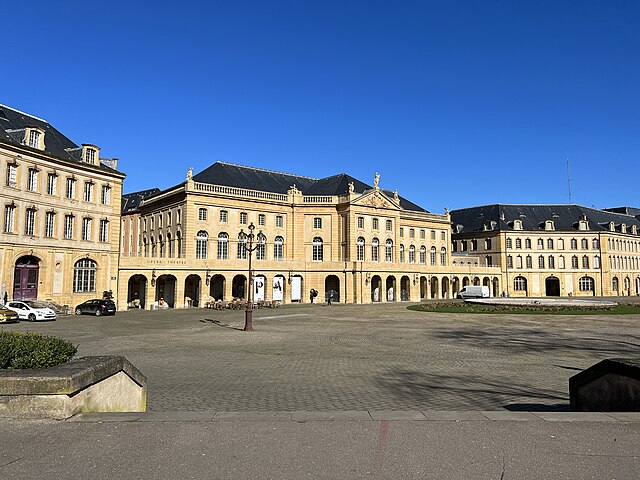The Opernhaus vorm Salztor was an opera house in Naumburg, then Saxe-Zeitz, that opened in 1701. The house was built during the regency of Moritz Wilhelm, Duke of Saxe-Zeitz, on his behalf. In 1716, it burned down and was not rebuilt. In the 15 years of its existence, at least 14 different operas and one play were performed there. One of them survived, Johann David Heinichen's Der glückliche Liebeswechsel oder Paris und Helena, and was revived in 2012 in a concert performance.
Cover of the libretto of Olimpia Vendicata by Heinichen, performed in 1709
The Salztor in Naumburg in the 18th century; between the gate and the ledge on the right was the opera house behind the wall
Moritz Wilhelm, Duke of Saxe-Zeitz
Georg Caspar Schürmann
An opera house is a theater building used for performances of opera. Like many theaters, it usually includes a stage, an orchestra pit, audience seating, backstage facilities for costumes and building sets, as well as offices for the institution's administration.
Teatro di San Carlo in Naples, the world's oldest working opera house.
The Sydney Opera House is one of the world's most recognisable opera houses and landmarks.
Opéra-Théâtre de Metz Métropole, built by benefactor Charles Louis Auguste Fouquet, duc de Belle-Isle during the 18th century; it is the oldest opera house working in France.
The Estates Theatre in Prague (Czech Republic) is the only theatre left standing where Mozart performed.








